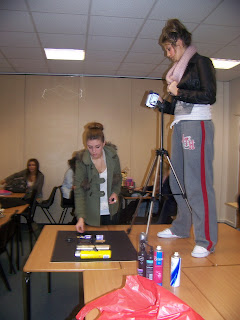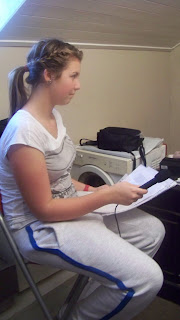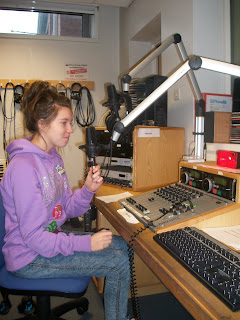How did you use media technologies in the construction and research, planning and evaluation stages?
In the begining stages if making the first 5 minutes of the documentary we had to conduct research to do this we used the internet to use facts and figures on hair, we also found codes and conventions to stick to when planning the documentary also we did a questionnaire for the audience feedback, then we could started the construction.
Constrution of interviews:
CameraThis was the most important technology needed to create the documentary. We need this to film the interviews, opening titles, vox pops and cutaways before we could edit them, without the camera we could have filmed anything for the documentary.
TripodWhen filming the interviews and the opening titles we needed a tripod. This was so that there was no shakey camera movement when filiming. When we were filiming the opeining titles it was every important and useful because we had to make sure the camera stayed in the same place while we added different hair products to spell the word hair.


 Stills camera:
Stills camera:While we were doing all of the filming we were asked to take pictures to show that it was us filiming we hadnt simple took a clip of youtube. This is useful because now we have photos to show that we done it.
Microphone:Along with the camera and the tripod the mircophone was also a very important piece of technology which was needed to make the documentary. Once when we had an interview to so the microphone didnt work and it disrupted all of our work becuase we had to re-film again.

Editing:
Adobe Premier:When it came to editing the questions and making it to the documentary we had to use adobe premier because it is easy to use and effect to find the exact part that is needed to be edited. I think this was the best technology which we could have used for the editing, i had never used it before and it was really simple to understand. However it did take a while to complete everything.
 Radio studio:
Radio studio:After all the editing and we had created slots were a voiceover could be we went to the ice radio studio to record our voiceover. We did this hear rather than on a voice recorder because the quality of the voice clips are more better. The voiceover tied everything together and finished of the documentary. We also used the radio studio for voice over on the radio ad.

Radio Trailer
Adobe Audition
When the script for the radio ad was recorded we created the radio trailer for our documentary, this was done by taking the documentary's sound including the interviews, vox pops and cutaways and then selected which part of the documentary we wanted in the radio ad. It was very easy to use and it was effective in creatin our radio ad.
Print ad:
Photoshop
After designing what we wanted the print ad to look like on paper we took photos to match the drawings, after selecting the perfect picture to convey the message of our documentary, we began the editing process in photoshop adding the letters from real channel 4 ads one by one and also adding the channel 4 sign. In school we have been taught photoshop for a while so the technology wasnt new therefore it was simple to complete this print ad.

















